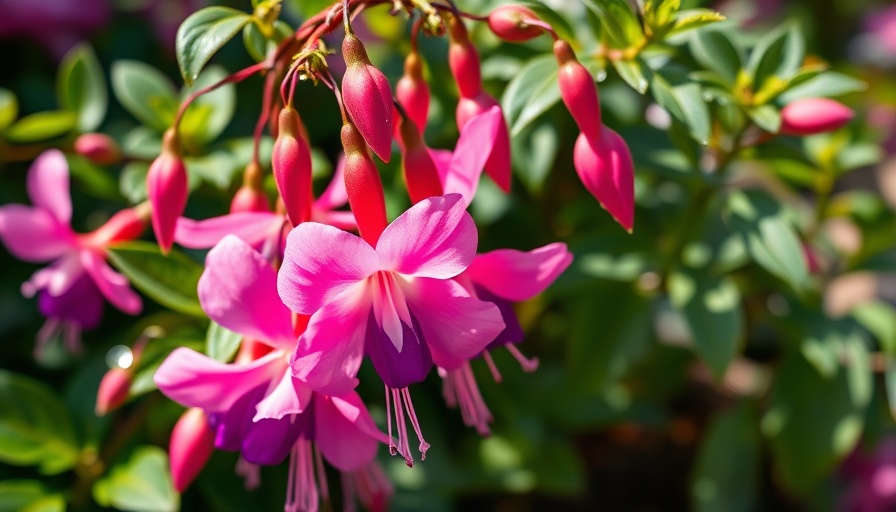
Why Watering Fuchsias is Essential for Success
When it comes to cultivating fuchsia plants, mastering the art of watering is paramount. These delicate beauties are particularly fussy about their water intake. Unlike more resilient flowers, fuchsias will wilt if they don't receive enough water and can drown if over-watered. Hence, understanding how and when to water these plants can significantly impact your gardening success.
The Right Time for Watering
So, when should you water your fuchsia? The straightforward answer is when the soil is dry. However, knowing exactly when that is might require some experience and attentiveness. New garden enthusiasts often misjudge the moisture level, resulting in wilting or drowning their plants. It’s critical to observe your fuchsias closely, reflecting on their changing needs due to fluctuations in weather and climate.
In milder climates, where rain is abundant, fuchsias thrive and require less frequent watering. However, in drier regions, a more diligent approach is necessary. For fuchsias in the ground, watering once or twice a week may suffice. In hanging pots and hotter areas, irrigation could be needed twice daily. Always check the soil moisture as temperatures above 70°F will typically demand extra attention to hydration.
How to Water Fuchsias Effectively
Watering fuchsias effectively requires more than just the right timing. Here are a few tips to consider:
- Water Depth: Ensure that water reaches the root zone. A thorough soak is more beneficial than quick, shallow watering. It encourages deeper root growth and improves plant resilience.
- Drainage Matters: Fuchsias thrive in well-draining soil. If soil becomes compacted or waterlogged, it can lead to root rot. Consider using containers or raised beds with good drainage.
- Humidity Consideration: Fuchsias appreciate humidity, so in particularly dry conditions, using a pebble tray with water beneath pots can help maintain a moist environment.
Watering Techniques for Hanging Fuchsias
Hanging fuchsias present unique challenges and watering needs. Here are some tailored techniques for keeping them hydrated:
- Use Watering Cans: A watering can with a long spout can help you direct water precisely and avoid overflow.
- Soak and Drain: When you water hanging fuchsias, ensure water drains out of the pot’s base. This prevents water from pooling and mimics their preferred natural habitat.
- Check Regularly: Create a routine to check the moisture levels. This is especially crucial in hotter months; you may need to water more frequently.
The Joy of Cultivating Fuchsia Plants
Ultimately, nurturing fuchsias offers immense rewards. With their vibrant blooms, they can elevate your flower garden, drawing compliments from guests and enhancing overall landscaping aesthetics. Emphasis on proper watering goes a long way toward maintaining the health and beauty of these stunning plants. By heeding these watering strategies, you not only promote the longevity of your fuchsias but also enrich your gardening experience.
Celebrate Your Gardening Success
Taking the time to learn effective watering techniques can transform your approach to plant care. Watching your fuchsia plants thrive provides a satisfying affirmation of your efforts. Embrace the journey of gardening, and don’t hesitate to experiment with what works best for your environment.
Whether you're nurturing these beauties for your garden or simply enhancing your outdoor decor, understanding the unique needs of fuchsias is essential.
 Add Row
Add Row  Add
Add 




Write A Comment